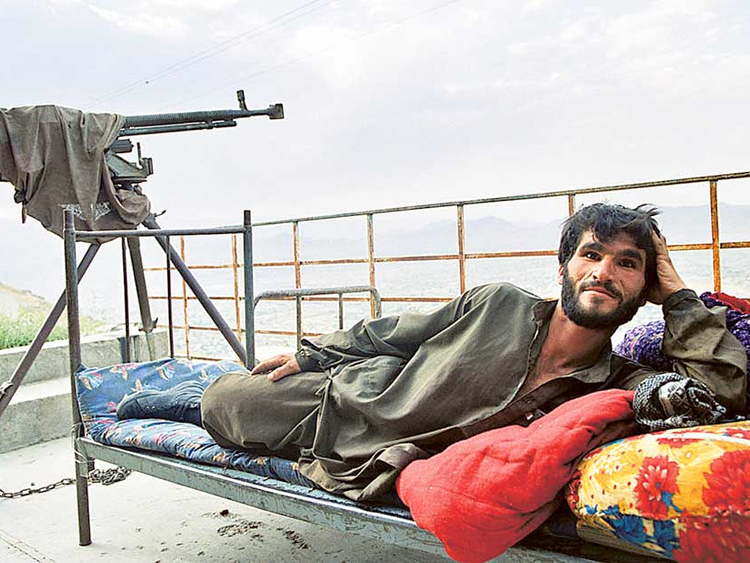
French-American photojournalist Pia Torelli was in her 20s when she made her first trip to Asia, trekking across Turkey, Iran, Afghanistan, Pakistan, India and Nepal. Since that trip in 1977, she has travelled across the world on assignments, and won many awards for her work; but there is a special place in her heart for Afghanistan, a country she has returned to many times for professional and personal projects.
Torelli, who is currently based in Dubai, is showcasing a series of photographs shot in that country during her visits in 2002 and 2013 in an exhibition titled “Walk Alone in Afghanistan”. Her photographs chart the tragic effects of war, drought and flawed policies on a once beautiful country, and express her love for the warm and resilient Afghan people.
Her pictures from 2002 document education and rehabilitation schemes begun by the government, as well the impact of the war and drought in Kabul. They include images of smiling schoolgirls sitting in classrooms with crumbling walls, a bakery run by women, abandoned bazaars, chador-clad women in the city, a young militant on lookout duty in the mountains, the deserted and dilapidated former palace, American helicopters on a sortie and a boat stranded on the dry bed of Lake Kargha.
In 2013, she was happy to see that the lake was full of water again, and the Fatima Bint Mohammad Bin Zayed Initiative (FBMI) was working effectively to help war widows and their families by training them as carpet weavers, and through other educational, healthcare and community welfare initiatives. But she also found that many of the bustling bazaars with street vendors and quaint cafés that she had enjoyed visiting had been destroyed and abandoned, and slums had sprung up on the slopes around Kabul.
“My memories of Afghanistan were of a modern and peaceful country with an amazing landscape and wonderful people. Nothing could have prepared me for the way Kabul has changed. Before 1980 it was a cosmopolitan city with streetlights, boulevards and a river, but I was sad, angry and disappointed to see that 23 years of war and five years of drought have created a city of ruins, and the river is now just a muddy stream. Add to that the two million refugees who remain in Kabul because landmines make their villages uninhabitable, forcing them to squat in bombed structures and shacks on the dry river bed with no water, electricity or even windows,” Torelli says.
“In 2002 I was shocked to see how many bazaars, parks, cafés, schools and hospitals had been destroyed. But I was also heartened to see millions of children and specially girls back in the classroom, massive demining operations under way, women engineers who were forced to remain at home during Taliban rule doing refresher courses at the university, and hospitals helping to rehabilitate landmine victims. A decade later, in 2013 I saw how the FBMI is empowering women and supporting communities, and also some new infrastructure being built. But I also saw that the housing projects built by the government were beyond the reach of many people, who are forced to live in slums on the mountainside and fetch water from public fountains. It is my wish and hope that Afghanistan will soon emerge as a global crossroads of tourism and trade. I refuse to give up on this country, and continue to look for that lost beauty with my camera, my eyes and my soul,” she adds.
Jyoti Kalsi is an arts-enthusiast based in Dubai.
“Walk Alone in Afghanistan” will run at La Galerie Nationale, Al Quoz, until October 18.














